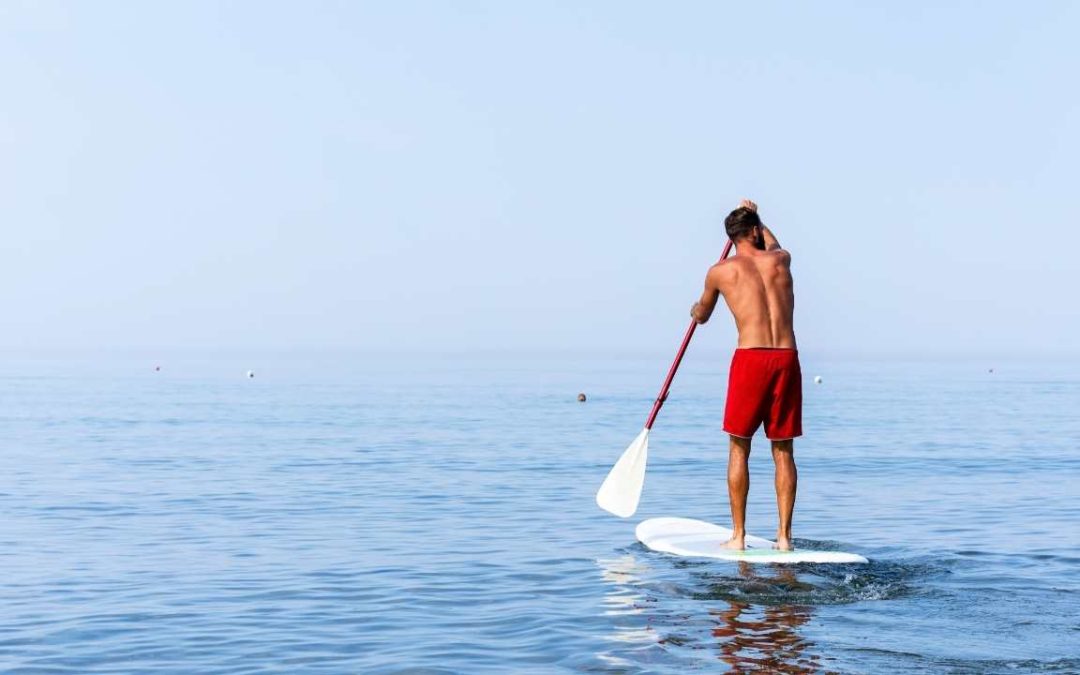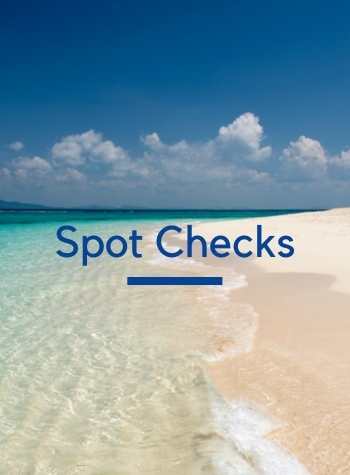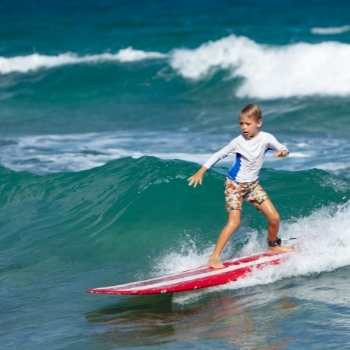These days, itʻs normal to see all sorts of watercraft out in the lineup on any given day. From body boards to body surfers, kayaks to surf skis, stand up paddle boards to surfboards; everyoneʻs out enjoying waves.
Stand up paddle boarding has always looked fun, but is it possible to do if all you have is a surfboard?
A surfboard can be used as a stand up paddle board as long as the surfboard has enough width and volume for the surfer riding the board. If the surfer is too big for the board, it will sink at slow speeds. Stand up paddle boards require increased volume and width for the average surfer to ride at such speeds.
My 6 year old can use my 6ʻ6” fish as a stand up paddle board with no problem at all. Try and get me standing on that board while it sits still in the water, impossible. But I have no problem getting to my feet with the extra speed a wave gives me.
So what makes a board work well as a paddleboard as opposed to a surfboard? Keep on reading.
What Is The Difference Between A Surfboard And A Paddleboard?
The primary purpose of a paddleboard is to keep the rider out of the water and on a platform for them to be able to paddle from at slow speeds. A stand up paddleboard (or SUP) rider also carries a paddle with them to propel the board through the water.
The purpose of a surfboard is to catch and ride waves as well as perform maneuvers on the wave face.
There are as many different types of surfboards as there are types of waves and surf styles, but all of them have one thing in common, they require the speed of a wave to provide you the ability to get to your feet.
In order for paddleboards to keep their rider standing without the aid of a wave, they are constructed to be wider and thicker than their surfboard counterparts. So wide in fact, that there is typically a handle at the mid point of a stand up paddleboard because it is too wide to hold under your arms otherwise.
What standup paddleboards gain in stability, they lose in maneuverability.
However, at the end of the day, if it can float you, you can use it as a standup paddle board.
My wife and I have actual stand up paddleboards, but my kids ride my surfboards. My 10 year old rides my 10ʻ longboard as a stand up paddle board and my 6 year old is able to use my 6ʻ6” fish.
If youʻre interested in this topic, you may also be interested in learning which board is easier to ride, a shortboard or a longboard?
Surfboard Vs Paddleboard – Volume and Size Comparison
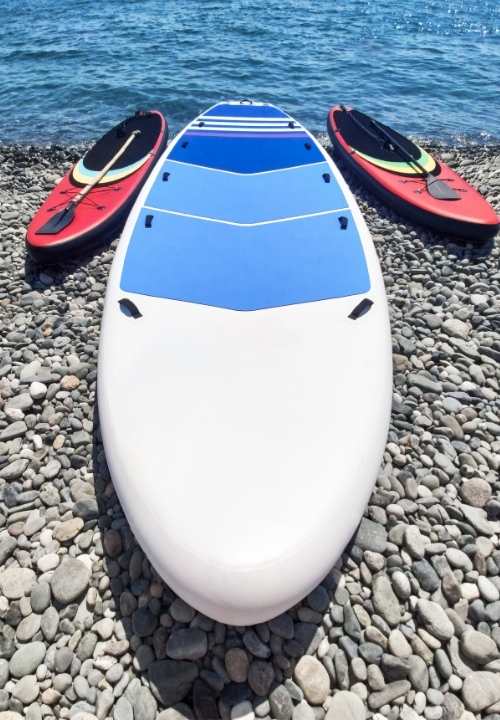
The difference in volume and size between the two boards is evident as soon as you see them next to one another. The SUP board is larger as it lifts the rider out of the water and therefore must have higher volume to do this.
SUP boards often start at 4 inches thick, whereas a surfboard can be as thin as 2 inches thick depending on the type and style of a surfboard.
There are longer and narrower styles of paddleboards that are racing or touring boards. There are also whitewater, fishing and yoga paddleboards that are wide and mid-length.
Even surfing specific paddleboards are still wide but are typically the shortest out of these styles. However, despite these different usages of paddleboards, the thickness does not vary much as the volume is required to maintain the buoyancy of the board.
SUP boards are much longer and wider and can be anywhere between 10 and 14ft long. They are normally heavier and thicker as well. But they also have inflatable and soft top stand ups as well. If you are in the market for one, a lot of my friends seem to like this brand from Drift.
Stand up paddleboards are great for beginners and families because they are very stable. You can even fit multiple people on a paddleboard and sometimes even a dog may join you.
Surfboards generally range from five to ten feet long and come in a variety of different sizes and styles depending on the type of board.
Surfboards are not required to have as much buoyancy as a paddleboard. This is because the rider typically sits or lays on the board and distributes their weight over the board. When the surfer stands on the board the movement of the wave and the speed increases and buoyancy keeps it from sinking.
Surfboard Vs Paddleboard Construction Comparison
Paddleboards have a stronger decking as they are designed to withstand the rider’s weight being concentrated in two spots on the board when they stand.
There is additional reinforcement to stop the decking from sinking and breaking under the weight of the rider. This reinforcement adds weight to the overall paddleboard. It also decreases its maneuverability and speed of the board.
This is different to surfboards which do not require reinforcements as their weight is more evenly distributed when they lay or sit on the board.
Surfboards are designed to be lightweight, fast and easily maneuverable. They typically use very light fiberglass cloth in construction compared to what is used for a stand up paddleboard. While this makes a surfboard light, it does not make them very strong.
Surfboard Vs Paddleboard – Other Aspects
Surfboards are waxed to create grip that assists the surfer to balance and stand.
Paddleboards often have a textured surface on top of the board or a large grip mat that stops the rider from slipping.
The rockers are very different between the two boards. A rocker is the boards’ curve that starts from the nose and ends at the tail. The curvature of the board changes depending on what the purpose of the board is for.
Both a paddleboard and surfboard have rockers however they vary a huge amount between the two styles. A surfboard has a larger rocker so that it is easier for the surfer to drive into waves and to be more responsive. This also allows the board to have increased movability.
The rocker in a paddleboard is commonly long and flat. This helps the board glide more efficiently and assists the rider to paddle the board effectively. This is why paddleboards perform better on flat and calm water.
Can you surf on a SUP board?
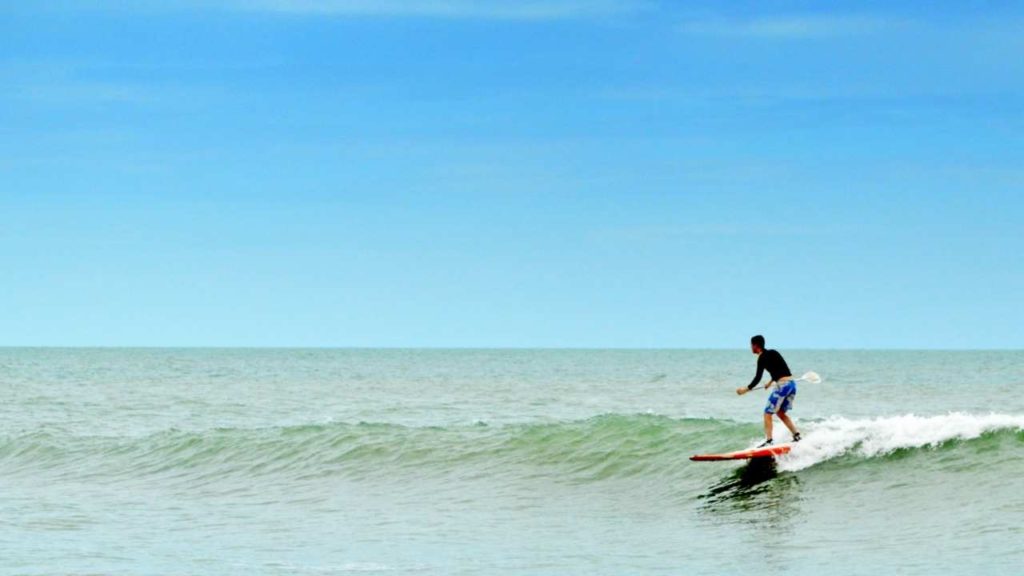
Stand Up Paddleboards are often used to catch and ride waves. These stand up paddle boards are designed to be a little smaller and more responsive than their flat water counterparts, but either style of stand up paddle can be used to catch waves.
It is recommended for SUP surfers to stay away from busy areas of traditional surfers as the boards are much larger and are less responsive. It can be hazardous to surf amongst other surfers.
If you ever paddle up to a pack of surfers on a stand up paddleboard, be prepared for stink eye. Paddleboarders seem not to realize the ease in which they can get into a wave compared to conventional surfers. They tend to become wave hogs because of this.
I know, I know. There are many reasons why a standup paddleboard works better for you as a surfboard to catch waves on. Maybe you have bad knees. Or you just canʻt paddle the way you used to.
You should be allowed to ride anything you want in the lineup, just keep the stand up paddleboards to the fringes. Or better yet, share. Donʻt take every wave just because you can.
In Summary
To sum it all up, basically any surfboard can be used as a stand up paddle board, if the board is big enough to handle you. But unless youʻre pretty small, youʻre going to need a stand up paddleboard designed to be just that.
Some stand up paddle boards are designed for flatwater, others are designed to ride waves.
Best way to see if you can use a surfboard as a paddleboard is to take it out and give it a try. If it floats you while standing without moving, perfect, it can work as a stand up paddleboard.

